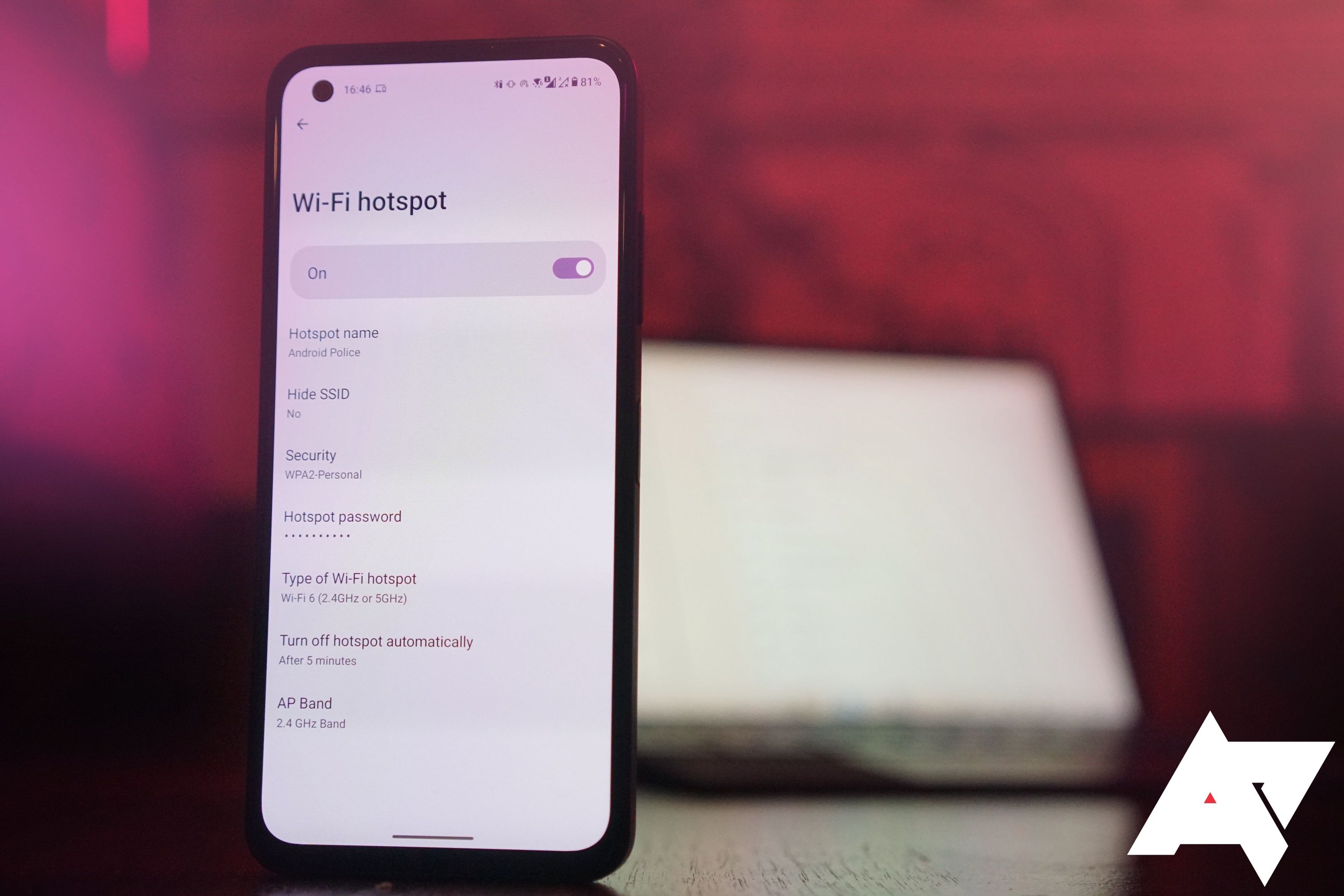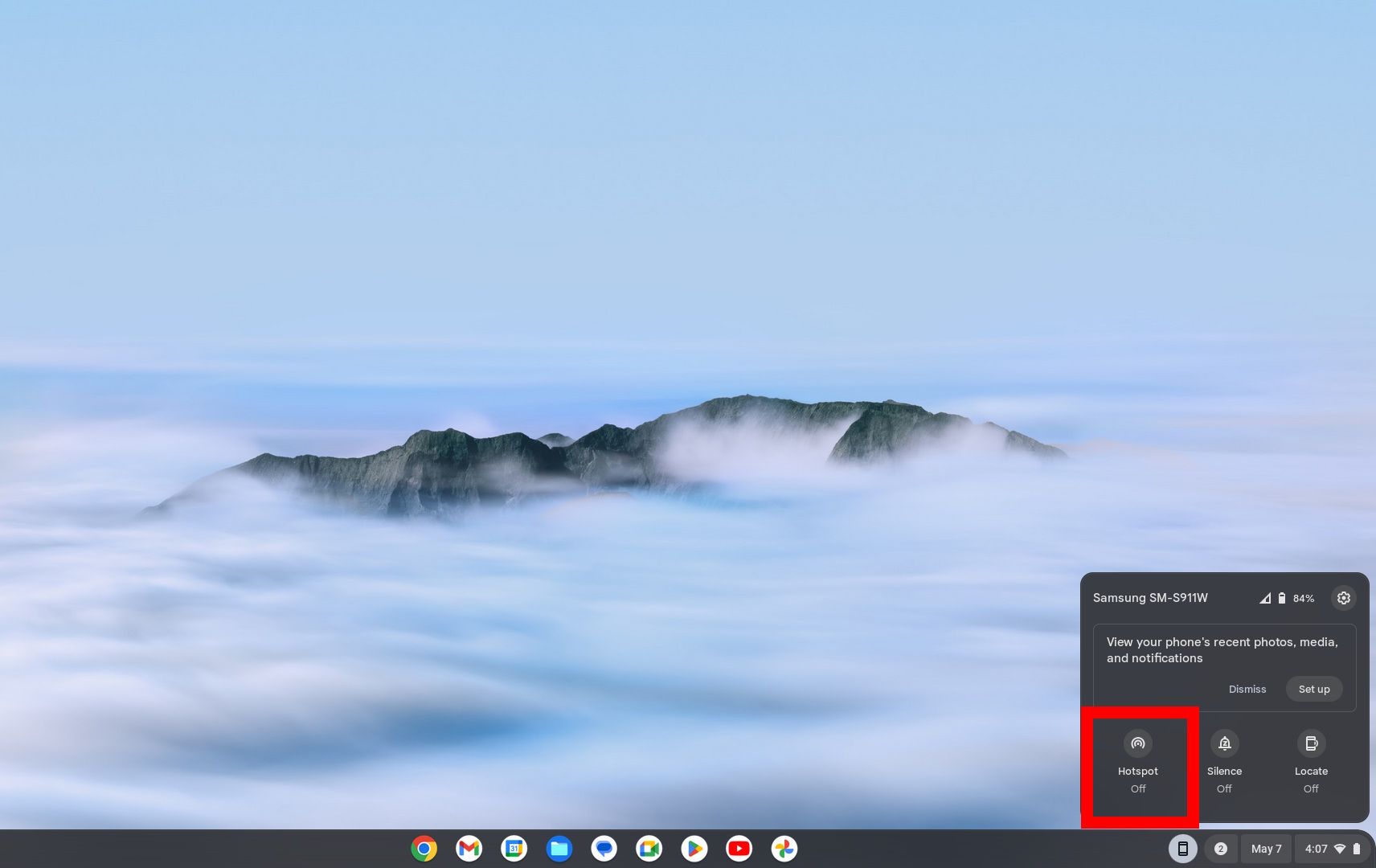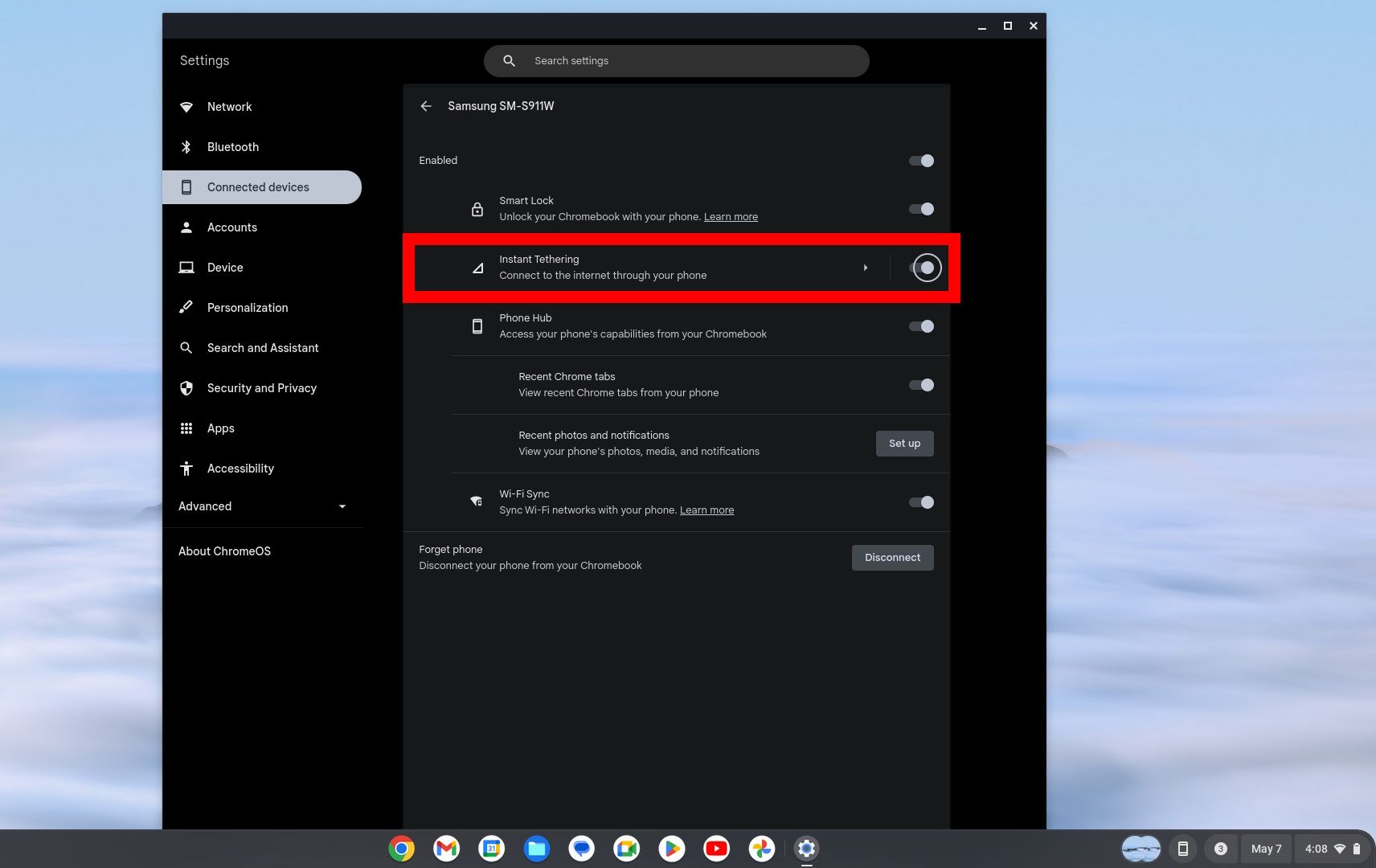Android phones have a handy feature for sharing cellular connections with other devices, turning phones into Wi-Fi hotspots. In many situations, this can be a lifesaver. If you own a 5G Chromebook or a 5G tablet, like the Samsung Galaxy Tab S9 Ultra, getting online isn't a problem. But for many other devices requiring the internet, you need a secure connection to a Wi-Fi source or be plugged in directly.
Though no Wi-Fi connection is perfect, sometimes a steady Wi-Fi connection suffers from unwanted network glitches. However, this demonstrates the importance of having a reliable, steady connection nearby. We've created this guide to show you how to easily share your phone's cellular signal to open a secure, stable Wi-Fi connection; we've also included a section on how to unlock Google's Instant Tethering feature for Chromebooks.
How to activate the Wi-Fi hotspot feature on your Android phone
You can create a Wi-Fi hotspot with your Android phone to share your internet with other devices that lack mobile connectivity. If you can't or don't want to use Wi-Fi, connect a USB cable or try Bluetooth tethering instead.
Before the first use, you need to turn on a Wi-Fi hotspot. The next time you need it, you can switch on the hotspot in a few taps.
- Go to Settings.
- Tap Network & internet.
-
Go to Hotspot & tethering.
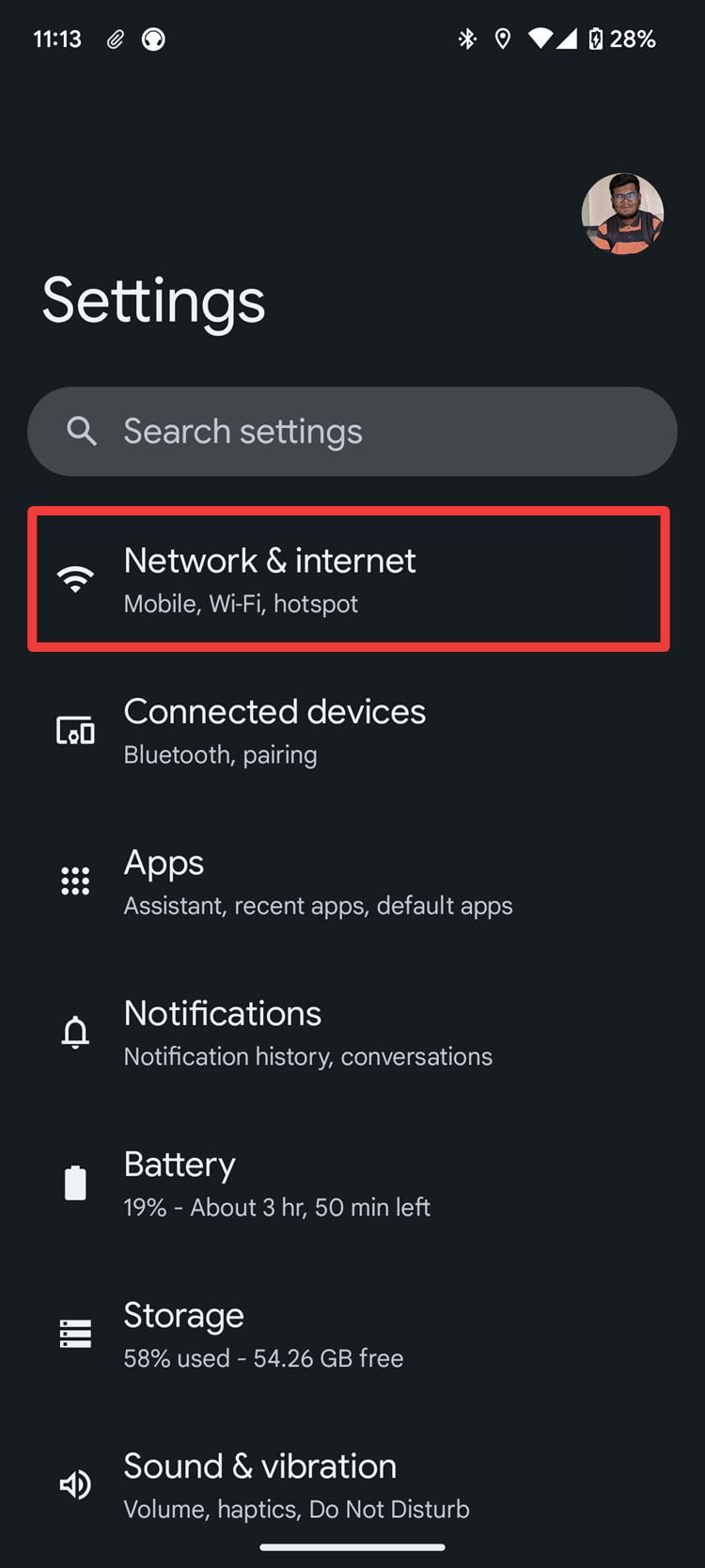
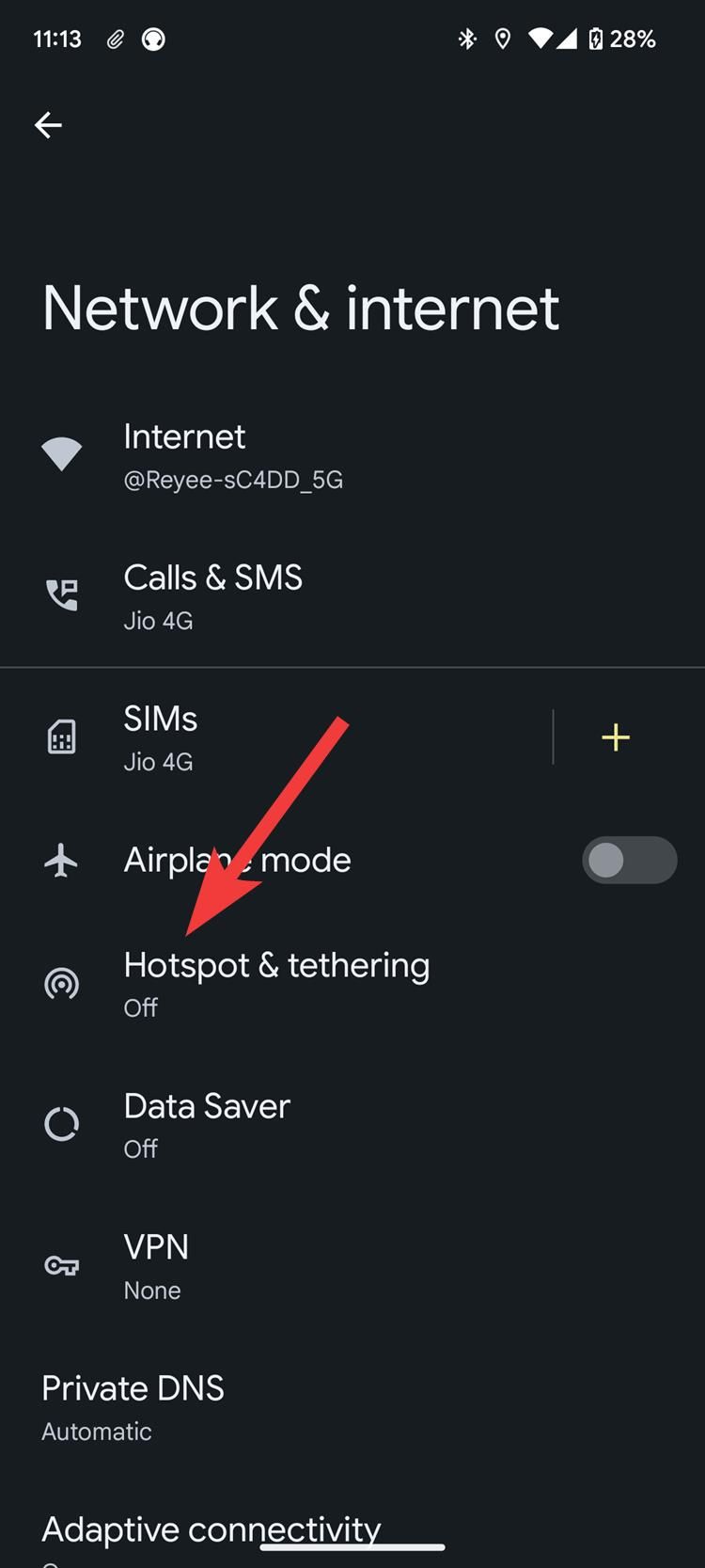
-
Tap Wi-Fi hotspot and set the Hotspot name.
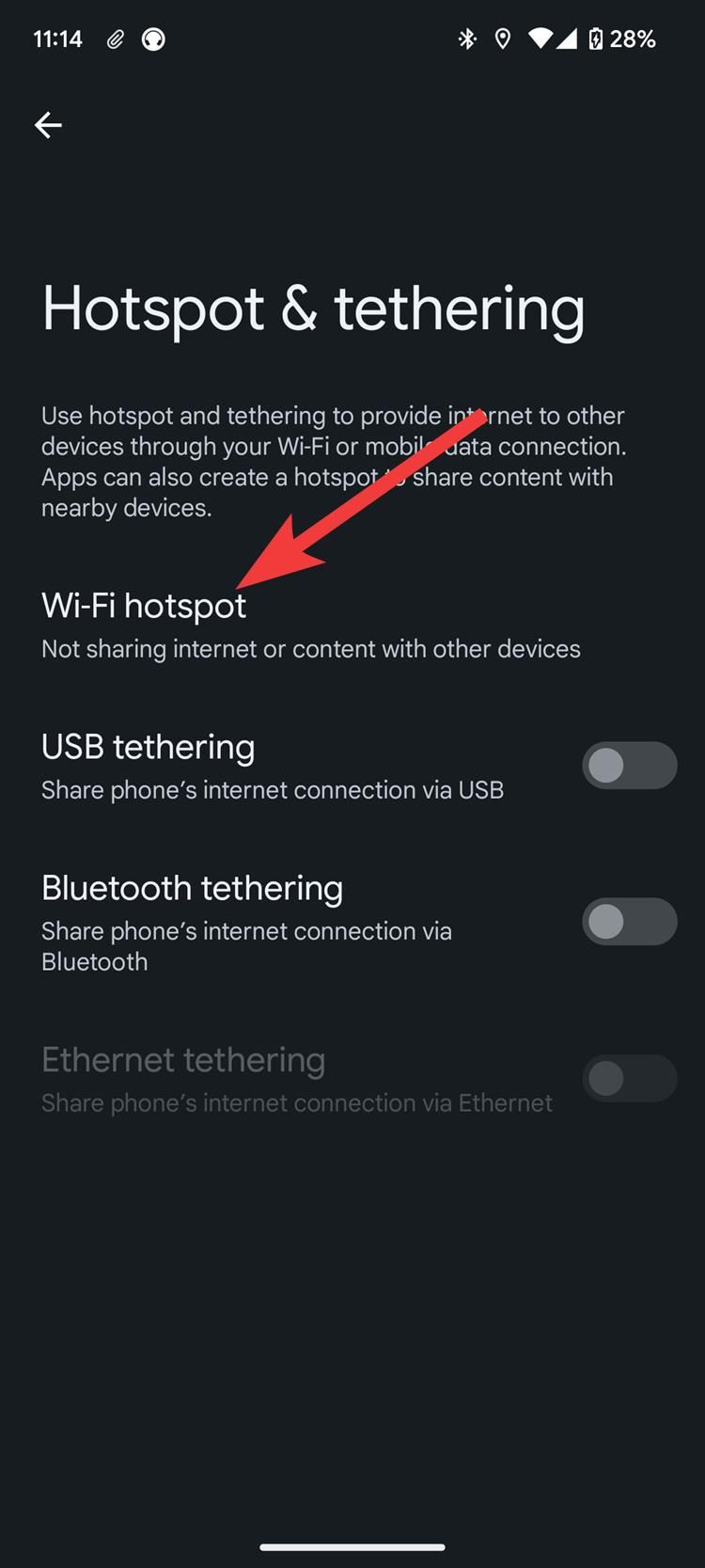
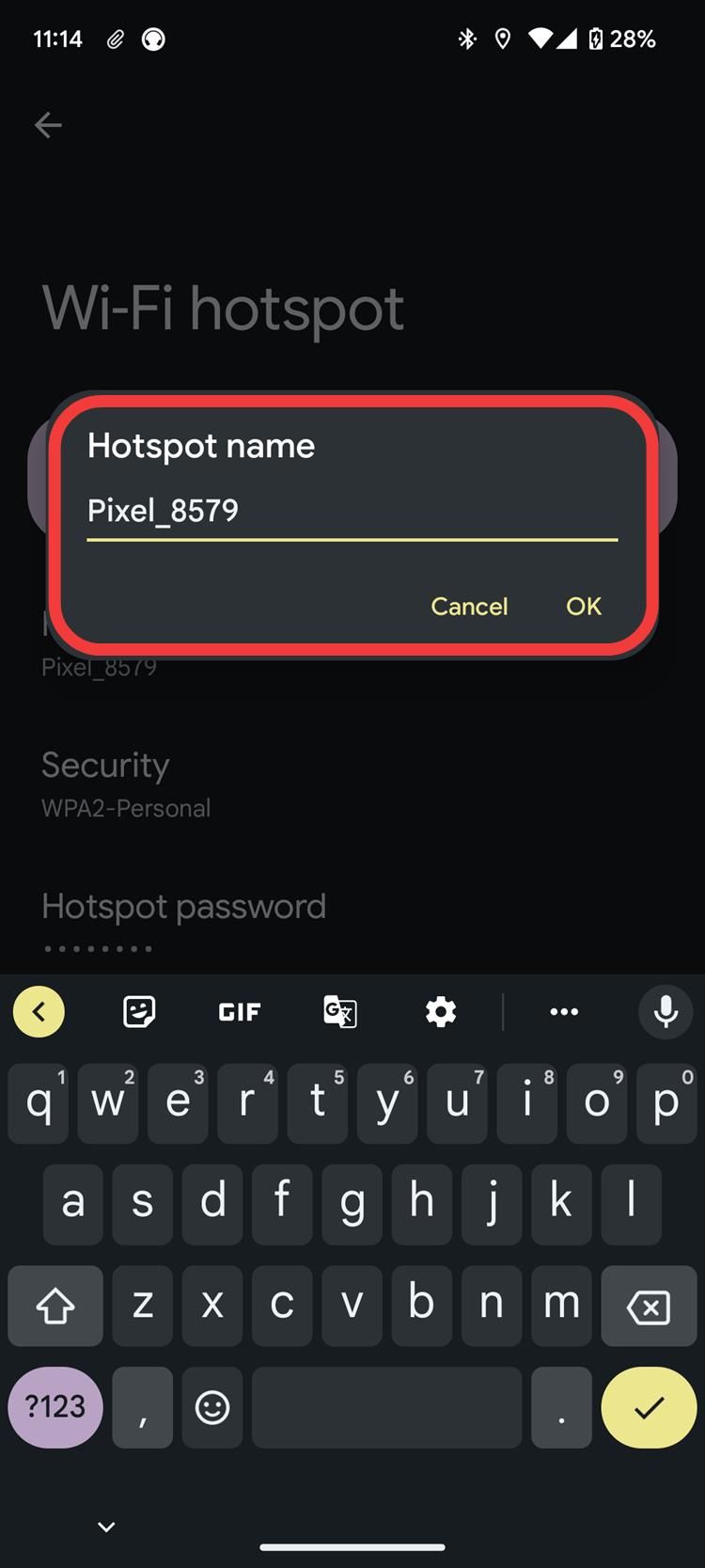
-
Set a password and turn on the Use Wi-Fi hotspot switch to start sharing.
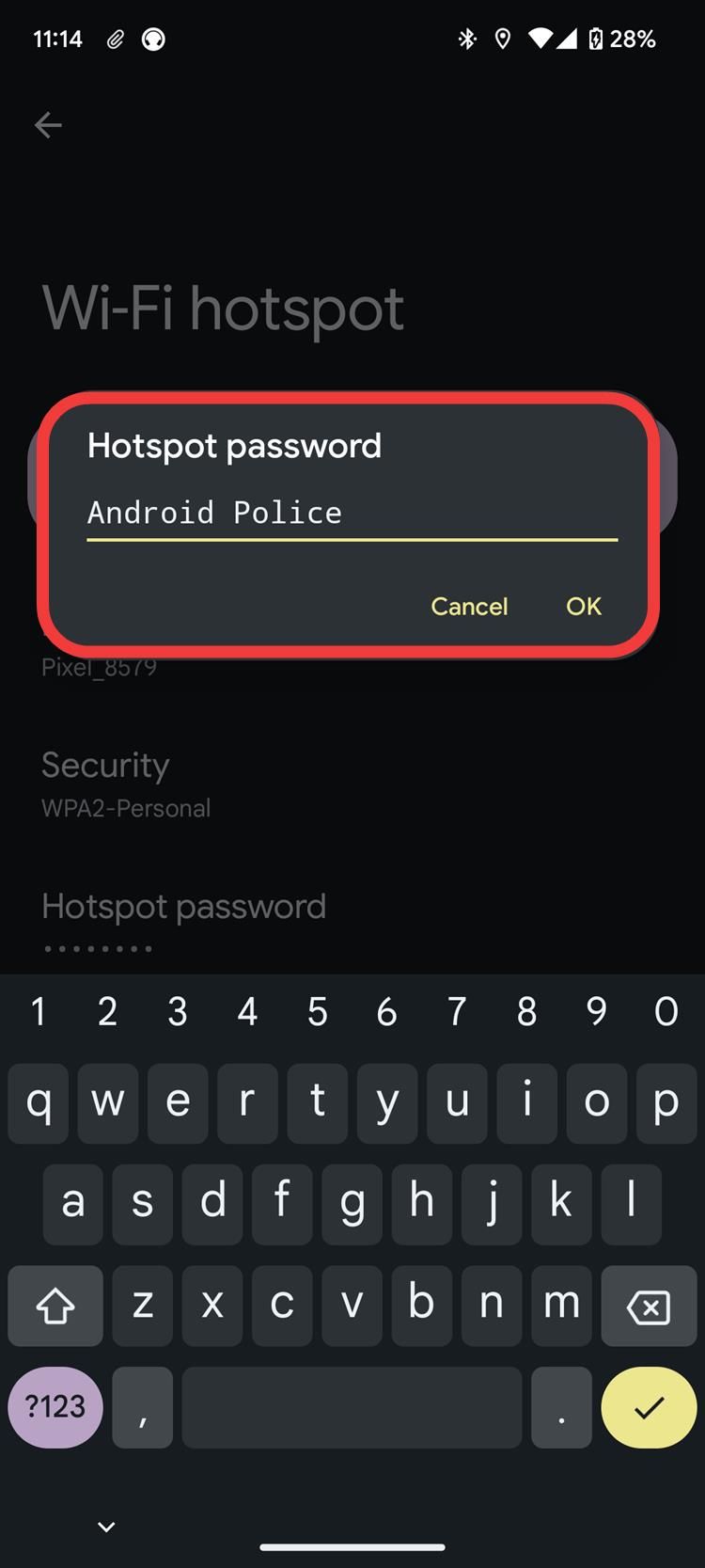
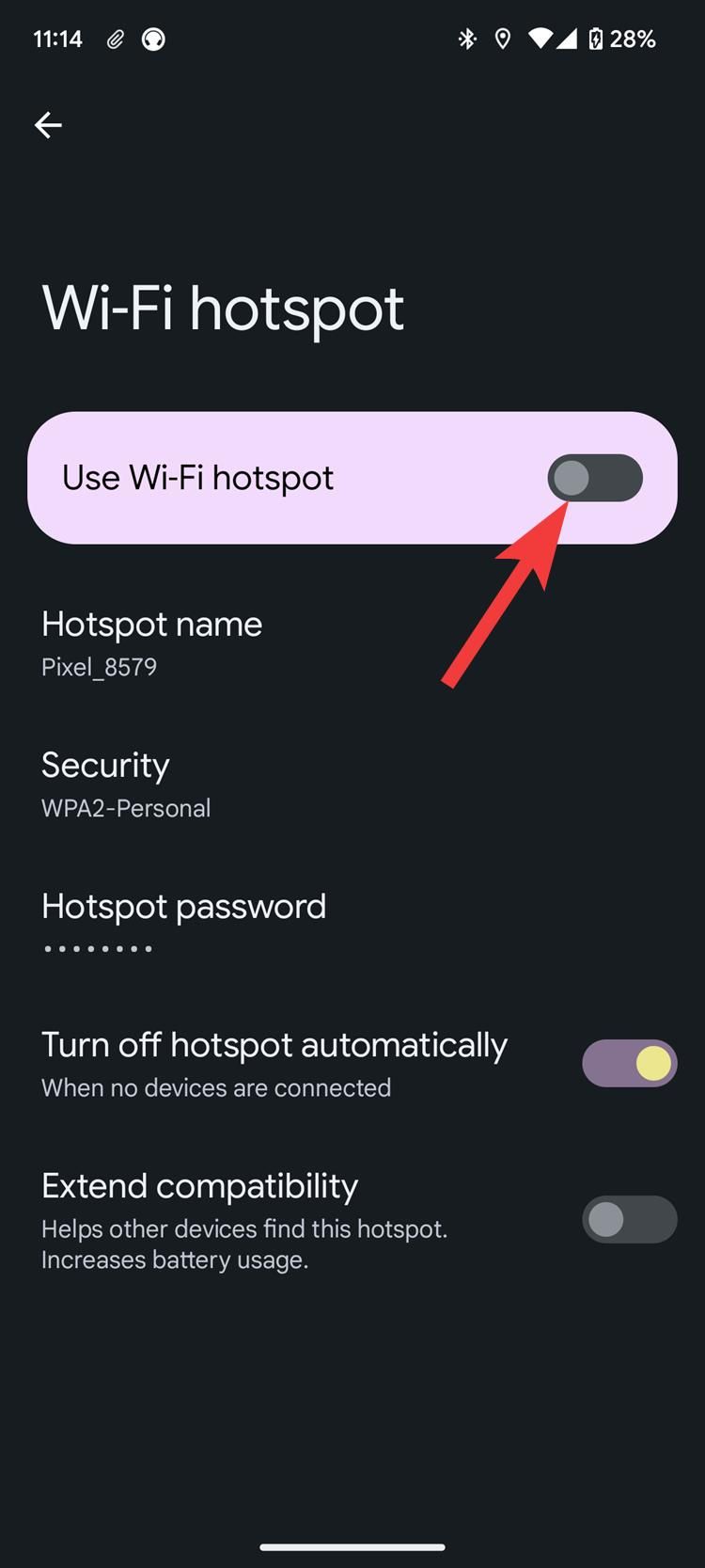
Going to Settings each time to enable a Wi-Fi hotspot may not be the most efficient way, and that's when the Quick Settings tiles come to the rescue.
You can use Nearby Share to send the Wi-Fi password or ask your friend to scan a QR code on your screen to avoid mistyping passwords.
Add a Wi-Fi hotspot shortcut in Quick Settings
Quick Settings in Android make activating and deactivating essential features on the fly easy. Here's how to add the Wi-Fi hotspot tile to your device's Quick Settings to toggle it on or off.
- Swipe down twice from the top of the screen to reveal the full Quick Settings panel.
- Tap the pen icon.
-
Scroll down and find the Hotspot tile.
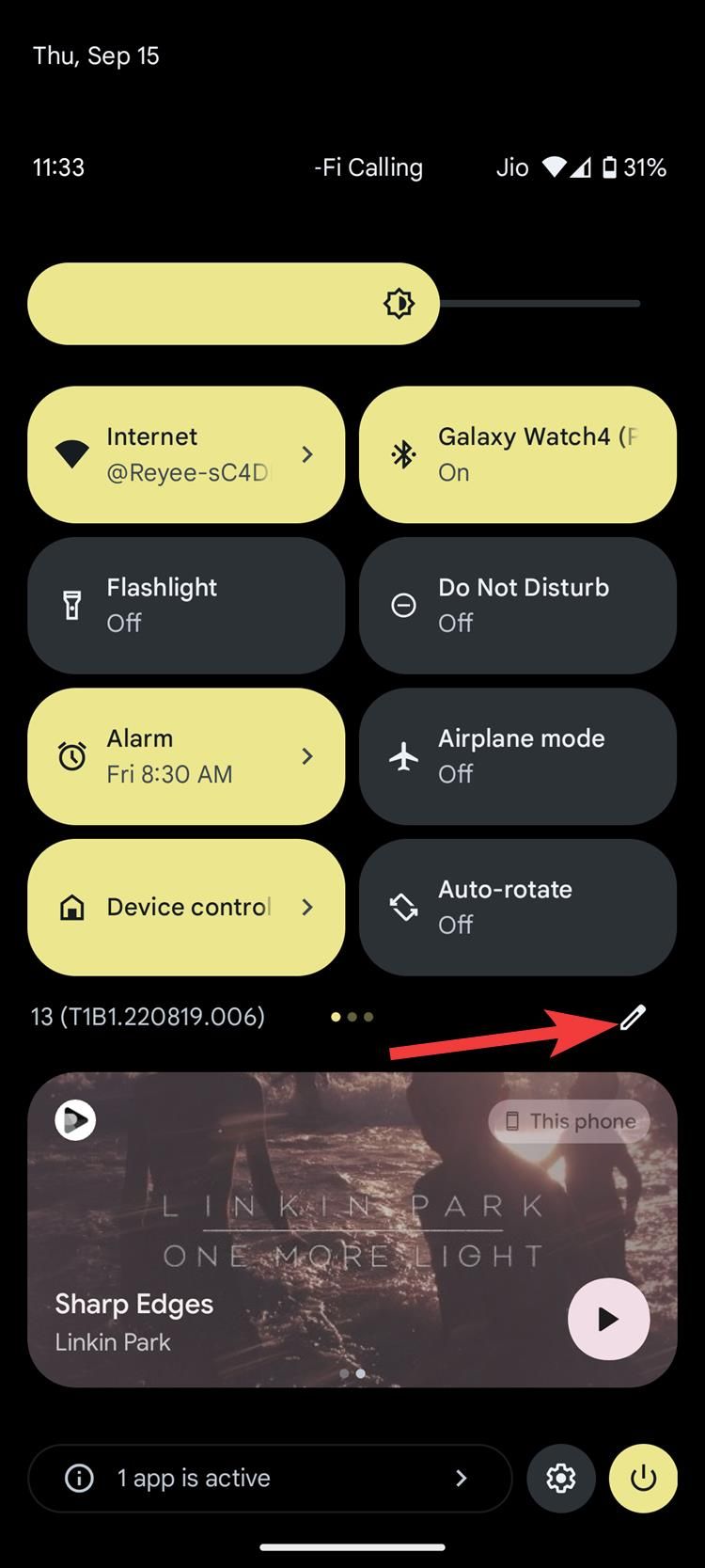
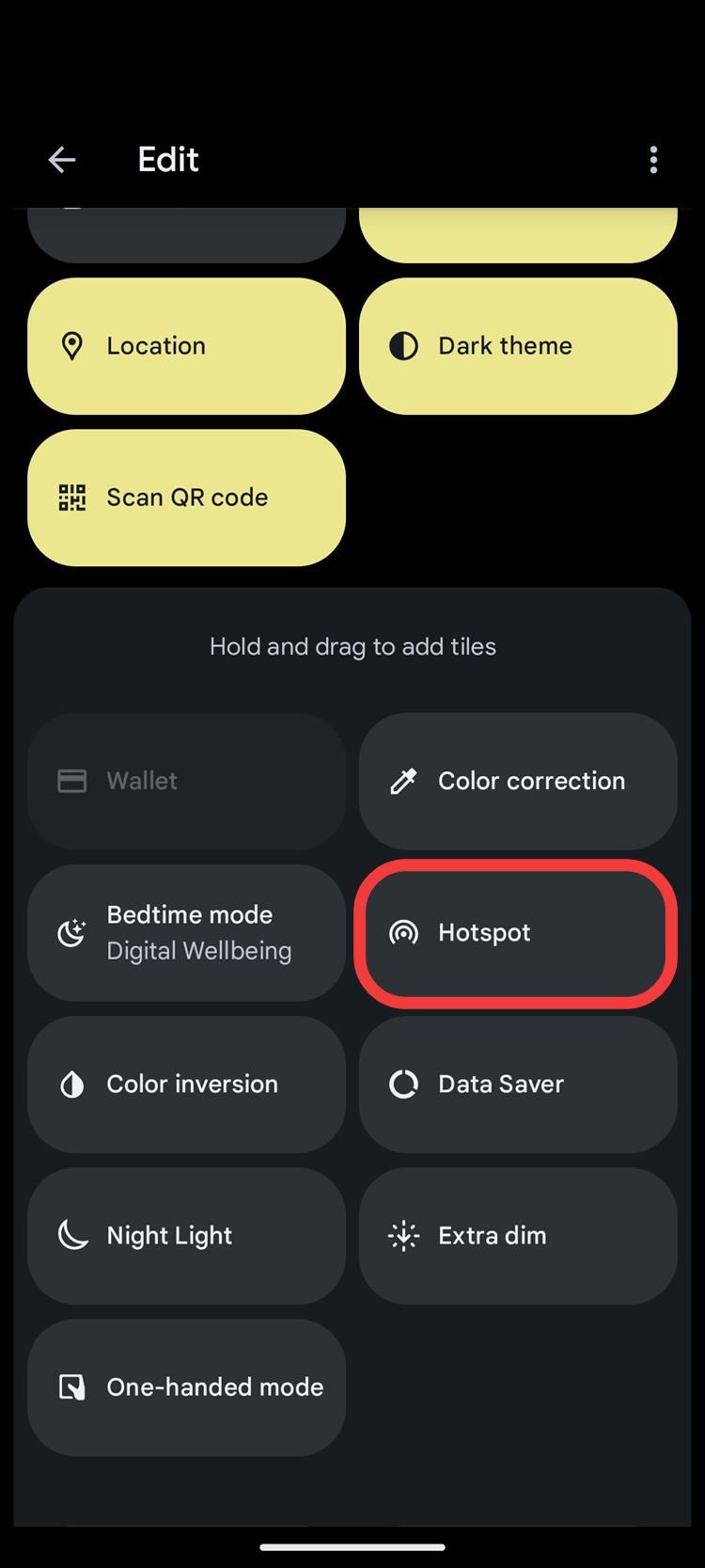
- Drag and drop the tile above.
-
Click the back arrow in the upper-left corner.
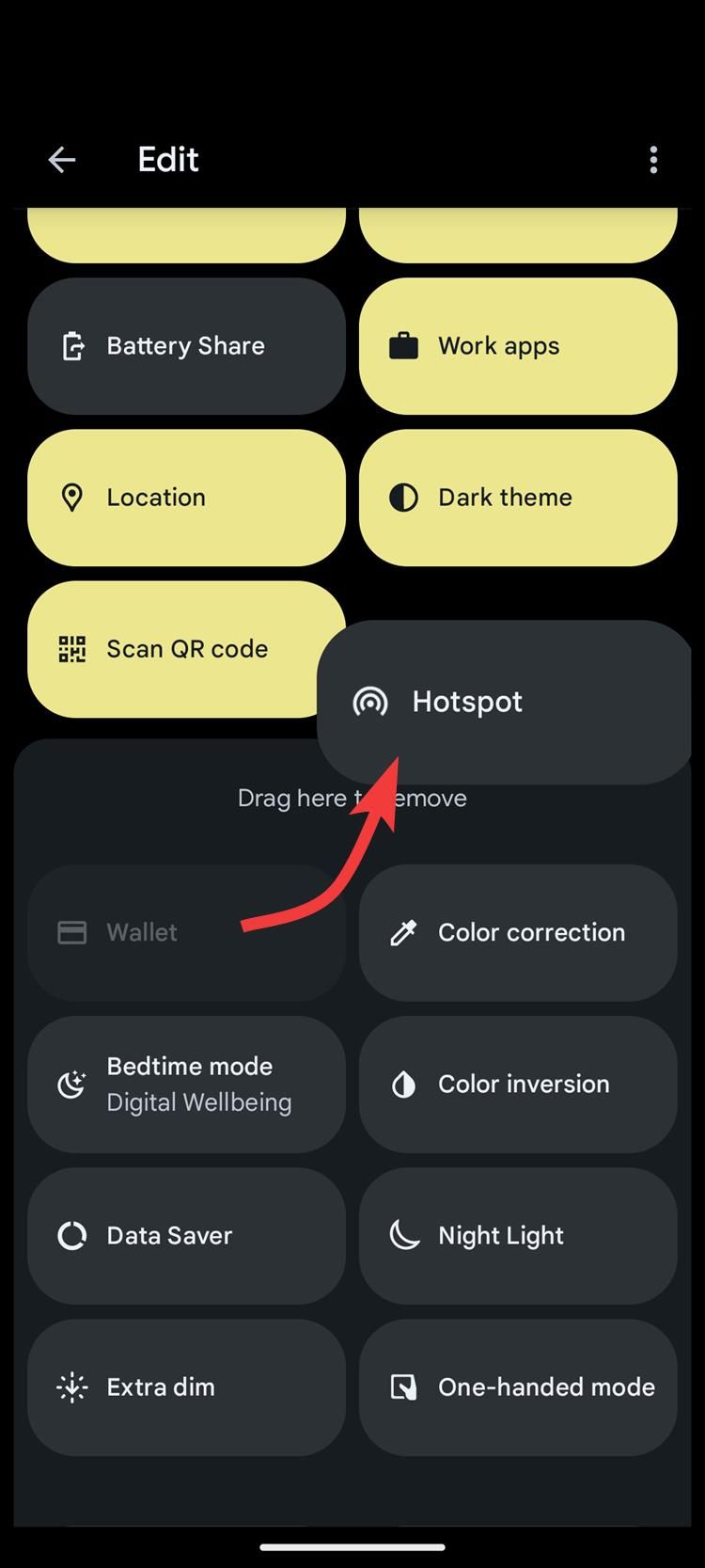
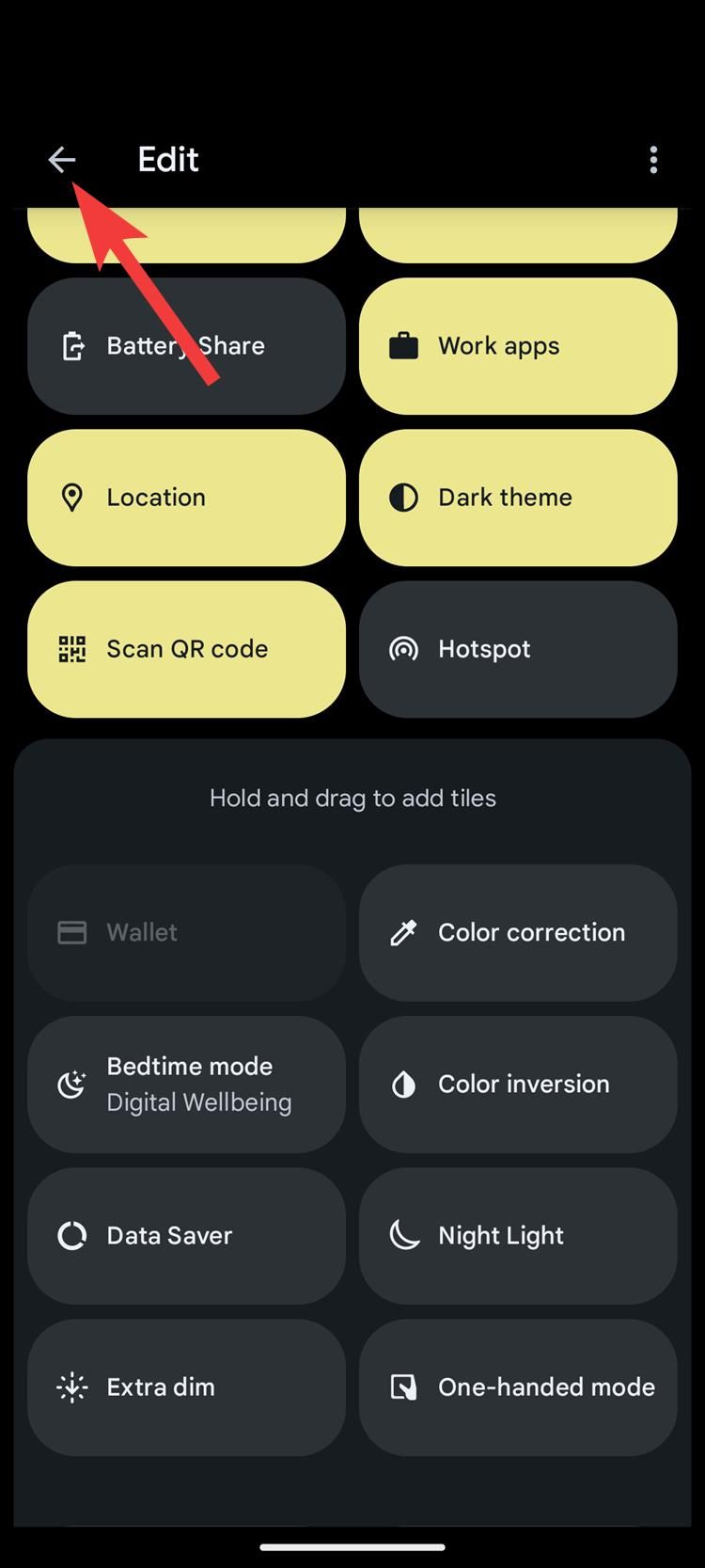
-
Find and tap the Hotspot tile in Quick Settings to start the hotspot.
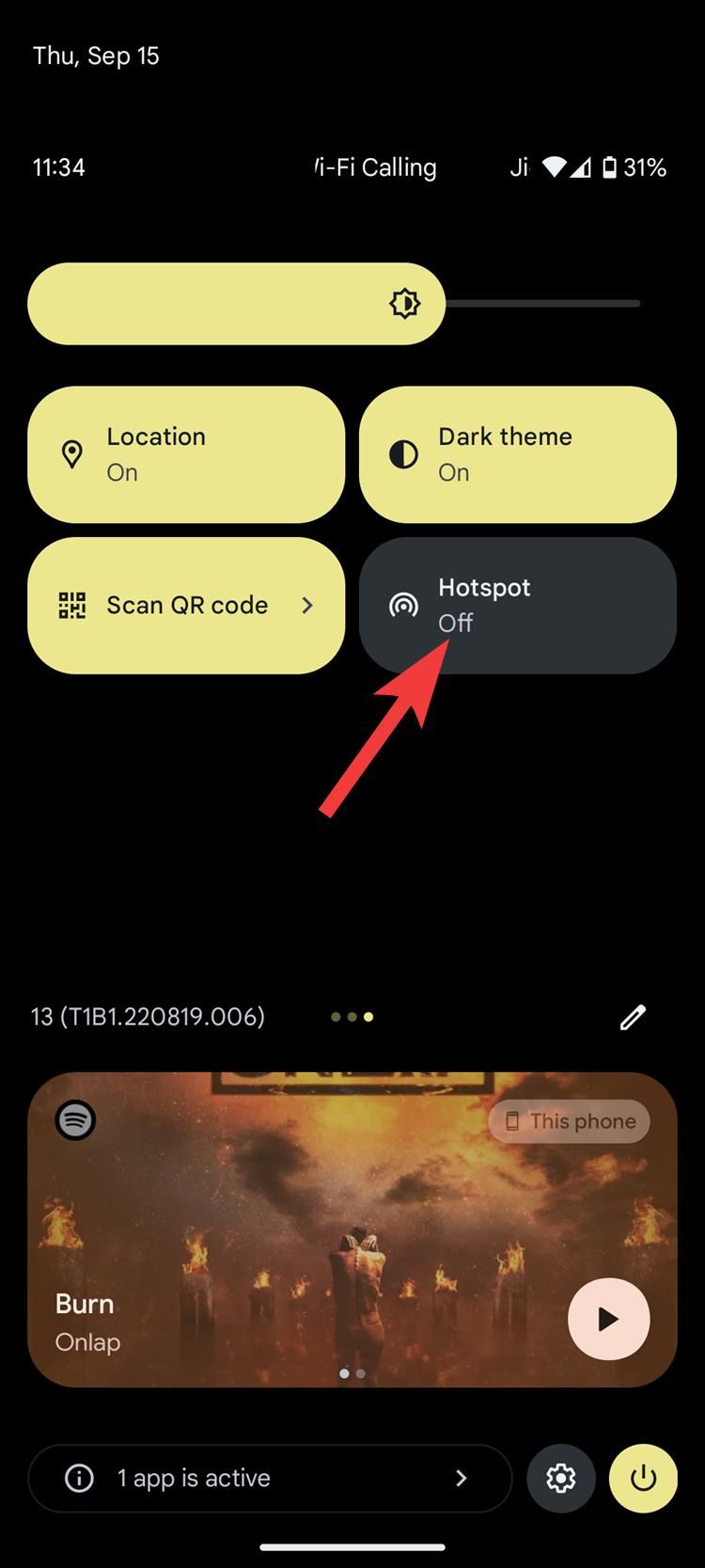
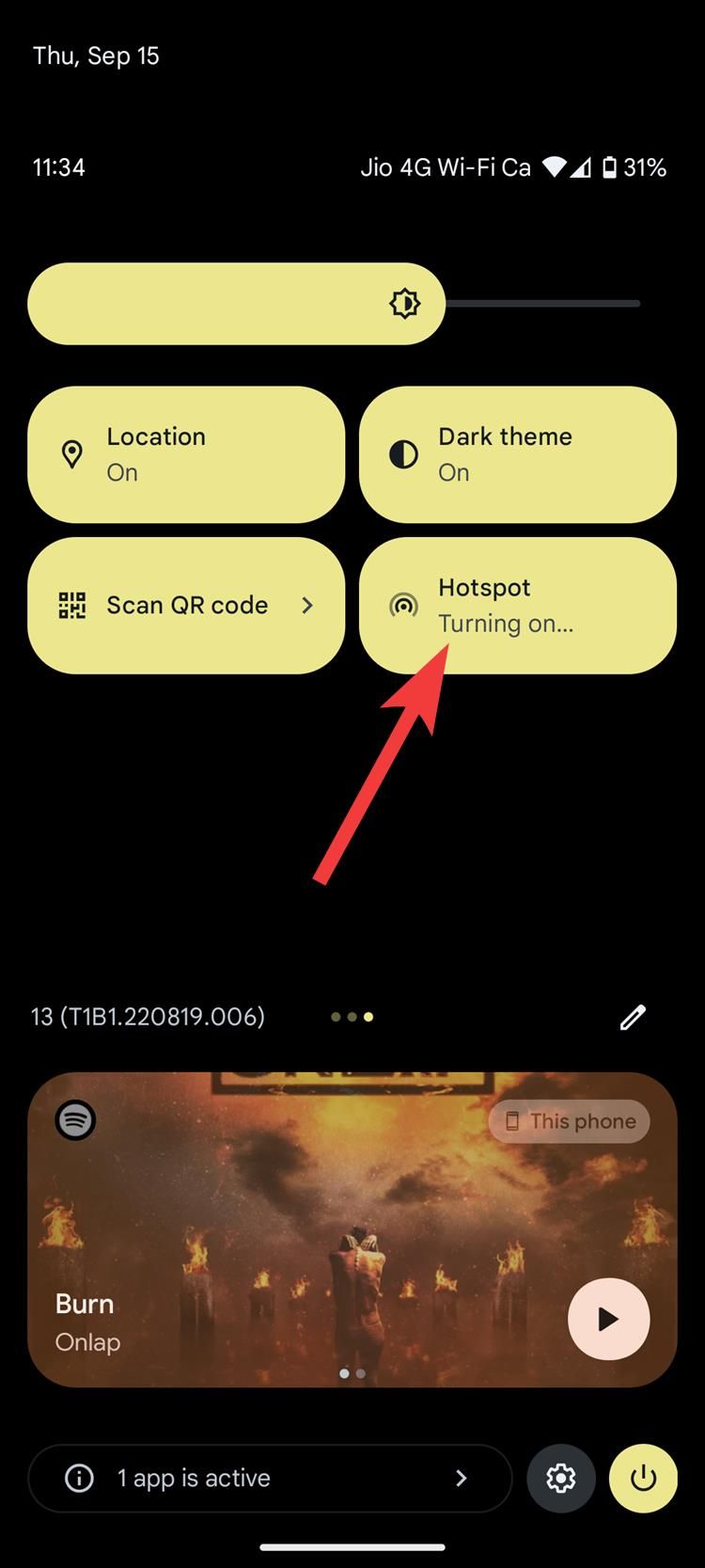
Activate USB tethering on Android
While most modern devices come equipped with Wi-Fi, sometimes you may have connectivity problems, especially with older laptops. In that case, you can share your data using USB tethering if you have a good quality USB cable. Here's how to do it:
- Connect the phone to your computer using a USB cable.
- Swipe down to open Quick Settings and tap the Android System notification.
-
In the Use USB for section, select USB Tethering.
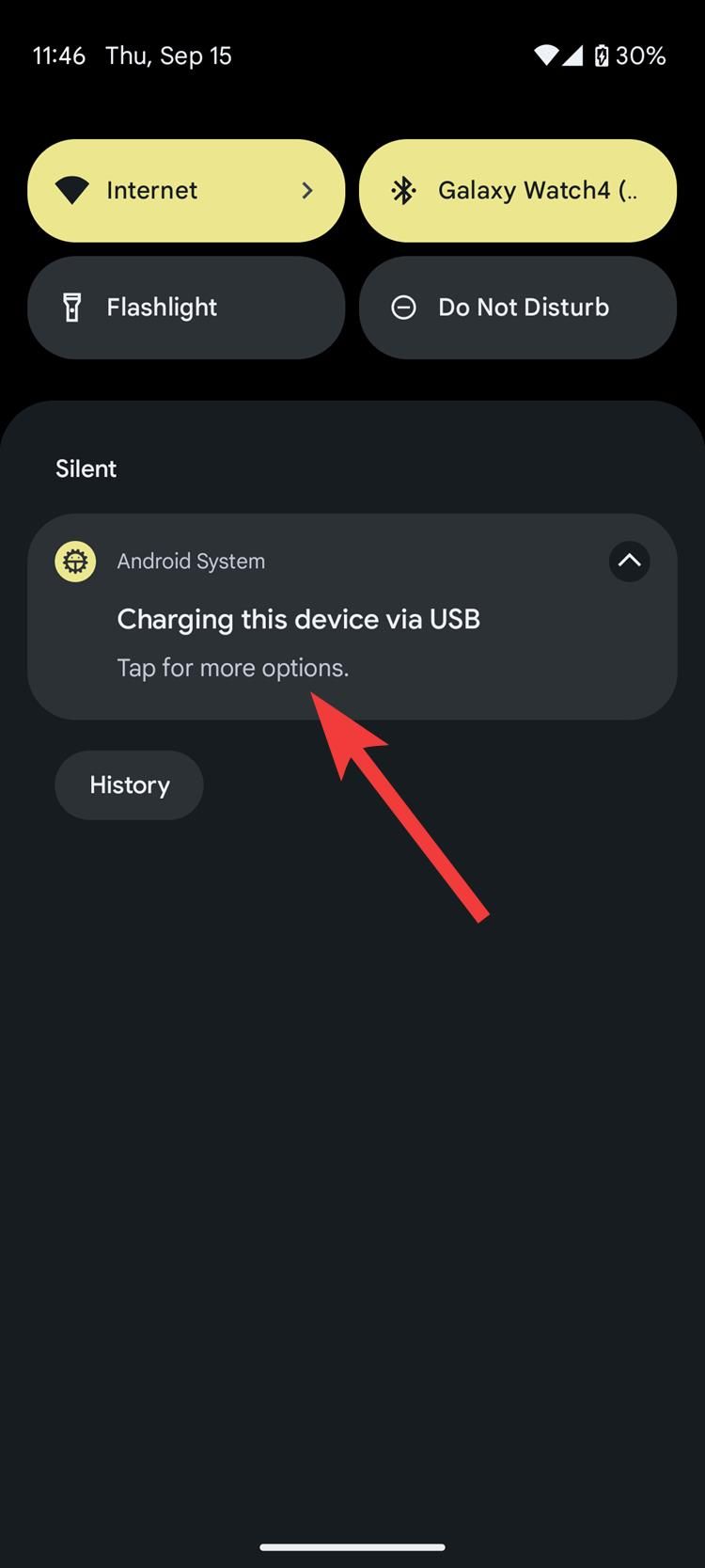
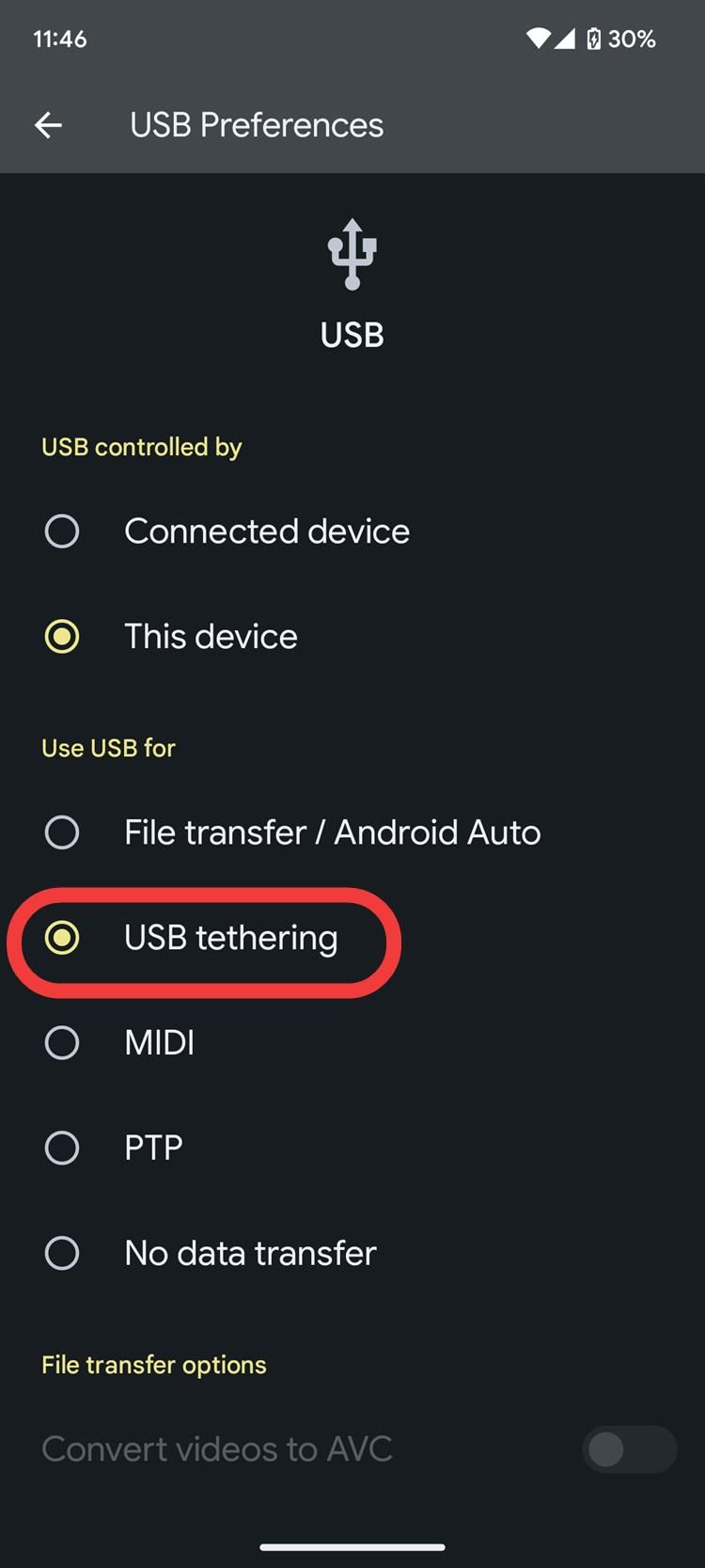
- If you don't see the notification, insert the USB into another port.
-
Alternatively, go to Settings > Network & internet > Hotspot & tethering and toggle on USB tethering.
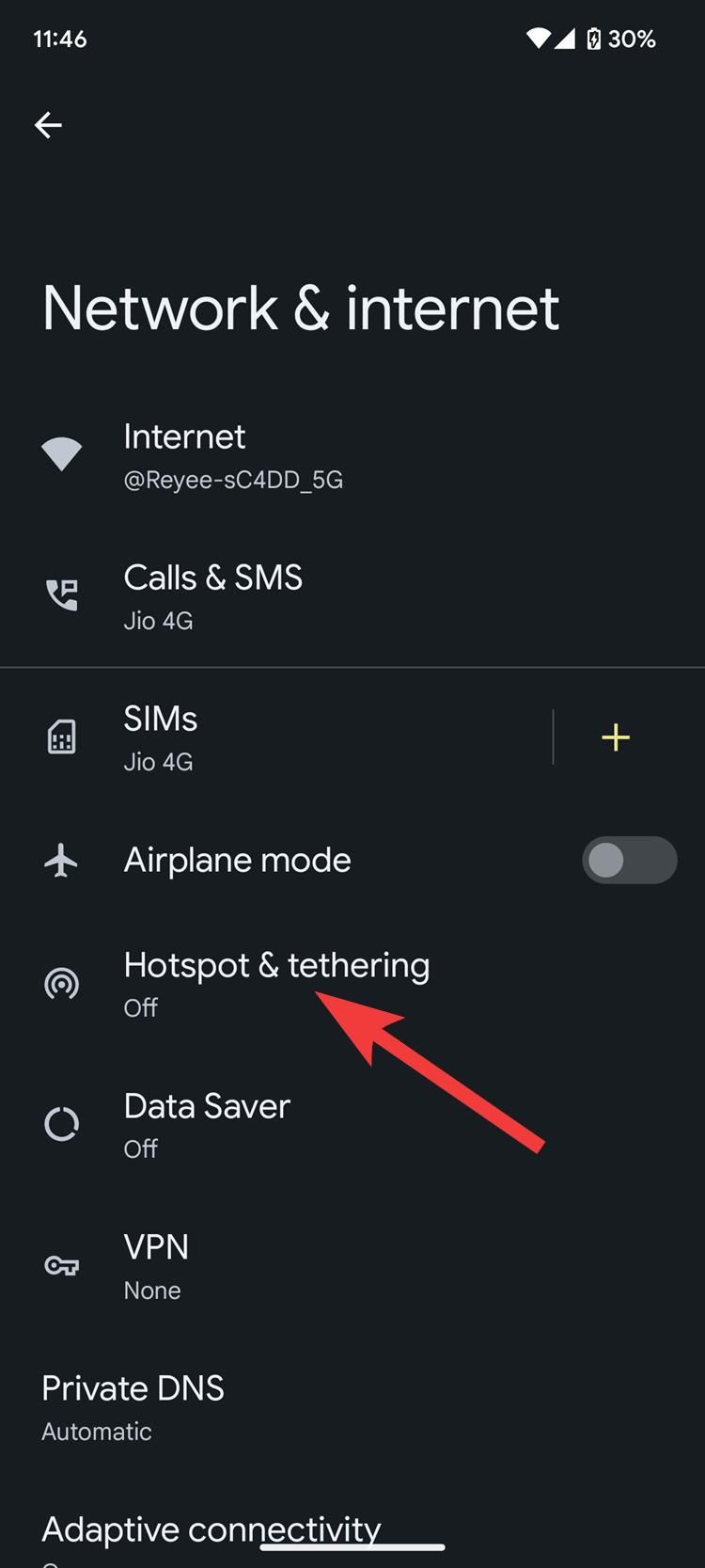
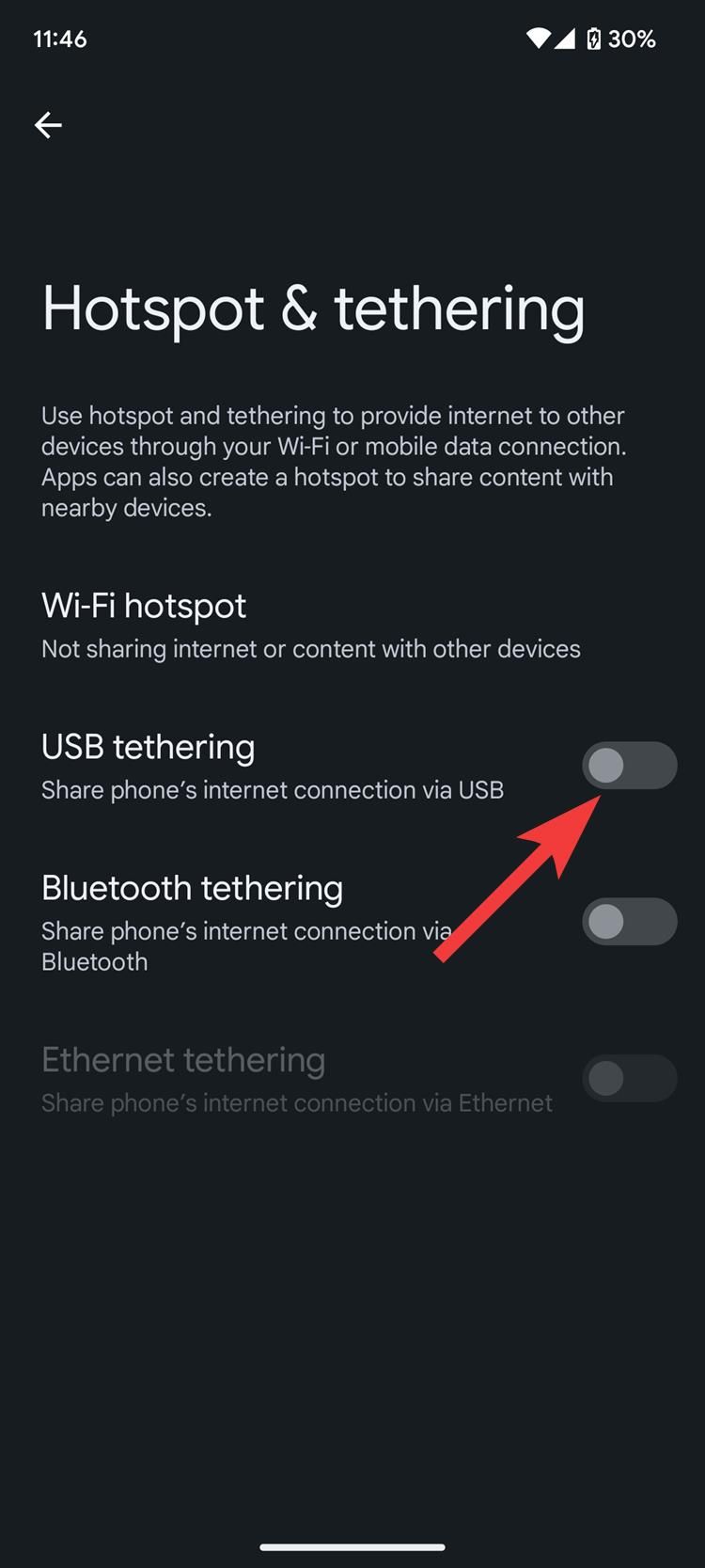
Activate Bluetooth tethering on Android
If USB tethering and Wi-Fi hotspot don't work, Bluetooth tethering is an option, but you should use this as a last resort since it's slow.
- Connect both devices via Bluetooth.
-
On the device you want to share the internet from, go to Network & internet > Hotspot & tethering and toggle on Bluetooth tethering.
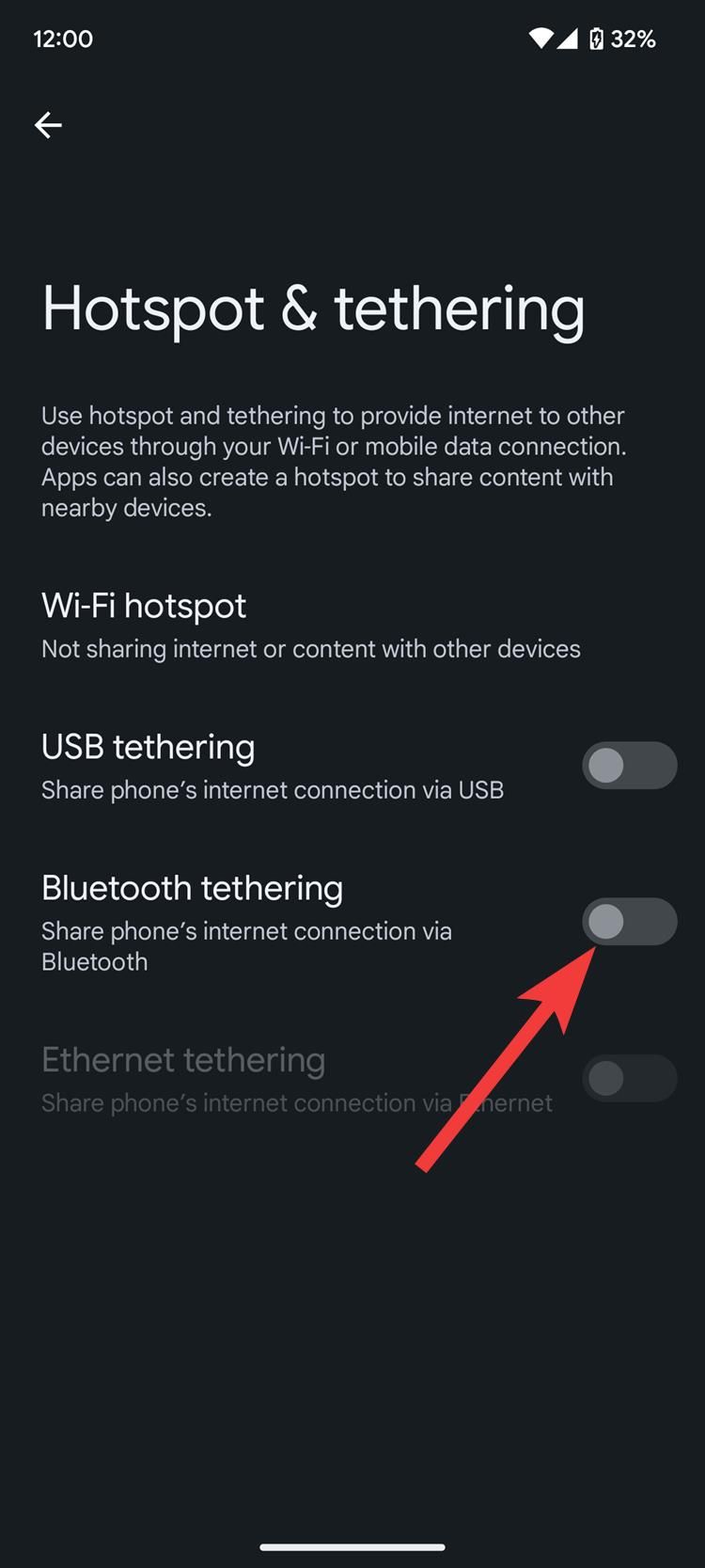
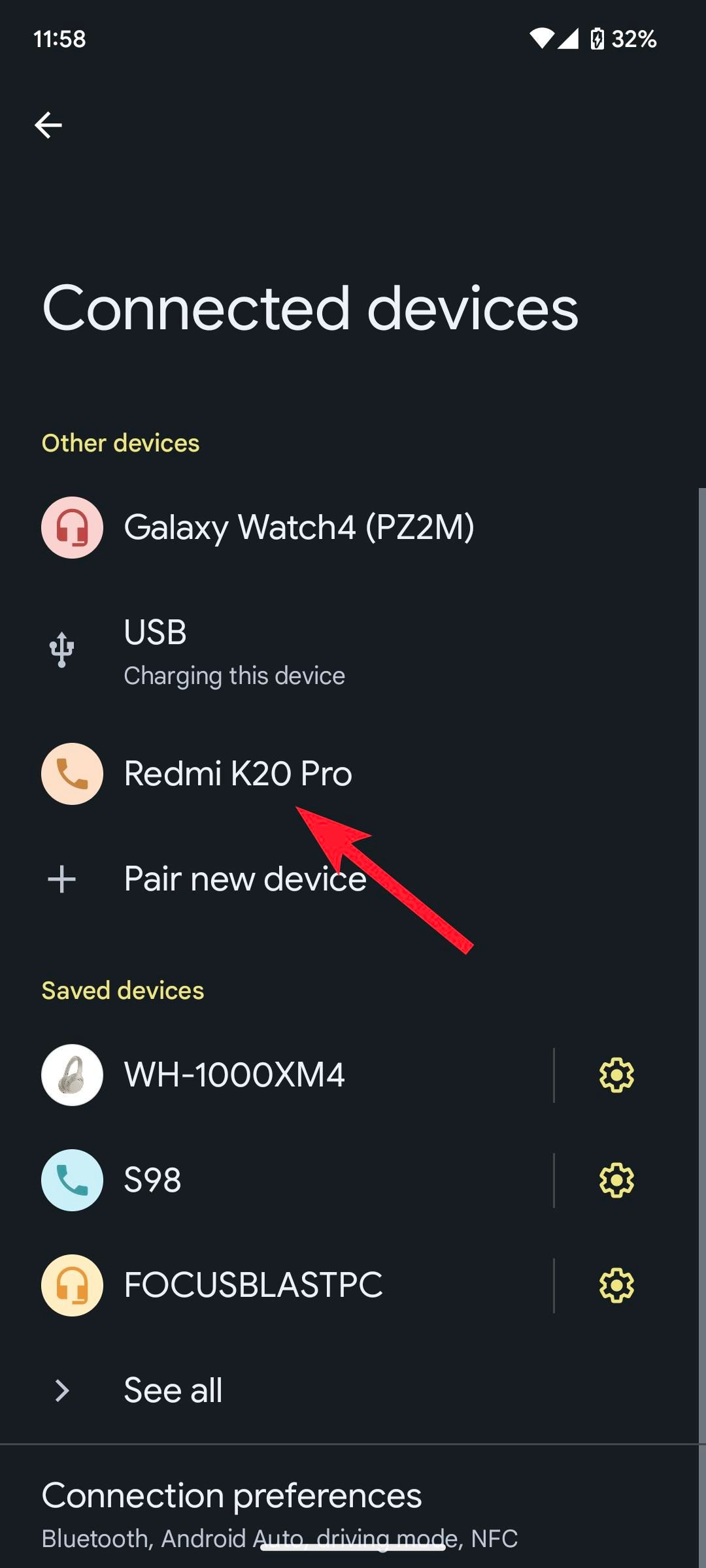
-
When done, you can access the internet on the other device.
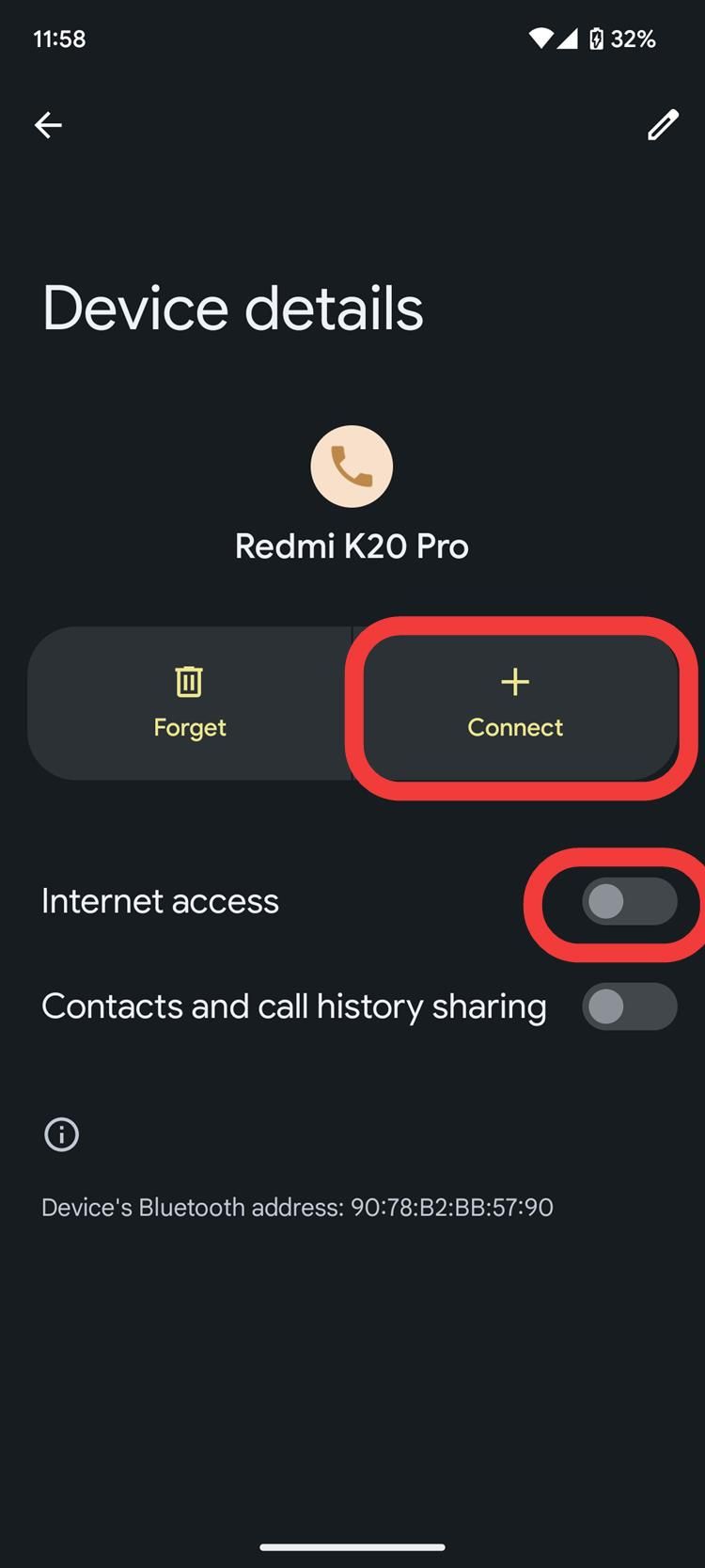
Bluetooth tethering is slow and potentially unusable compared to a Wi-Fi hotspot. If you must resort to this method, limit your internet use to the bare minimum. Avoid streaming video or updating apps, which could take a long time.
Use the Instant Tethering feature to connect your Android phone and Chromebook
Many of the best Chromebooks lack 5G or LTE capabilities, but you can fill that gap with your Android phone. Google's Instant Tethering feature makes it fast and easy when you connect your Android device to ChromeOS in Phone Hub. When done, follow these steps:
- Open Phone Hub by clicking the phone icon on the right side of the shelf.
-
Click Enable Hotspot or Hotspot to turn on your phone's hotspot and establish a private connection with your Chromebook.
-
You can also activate it by navigating to ChromeOS's Settings, clicking the toggle beside Instant Tethering under Connected devices.
You can use this feature to share the internet via mobile data and Wi-Fi from your phone. However, you'll need to turn on mobile data on your Android device for it to appear on the Chromebook. After you're connected, turning off your mobile data doesn't disconnect your devices.
Older devices (before 2020) don't support Instant Tethering. So, if your Chromebook is on this list, it cannot access this feature.
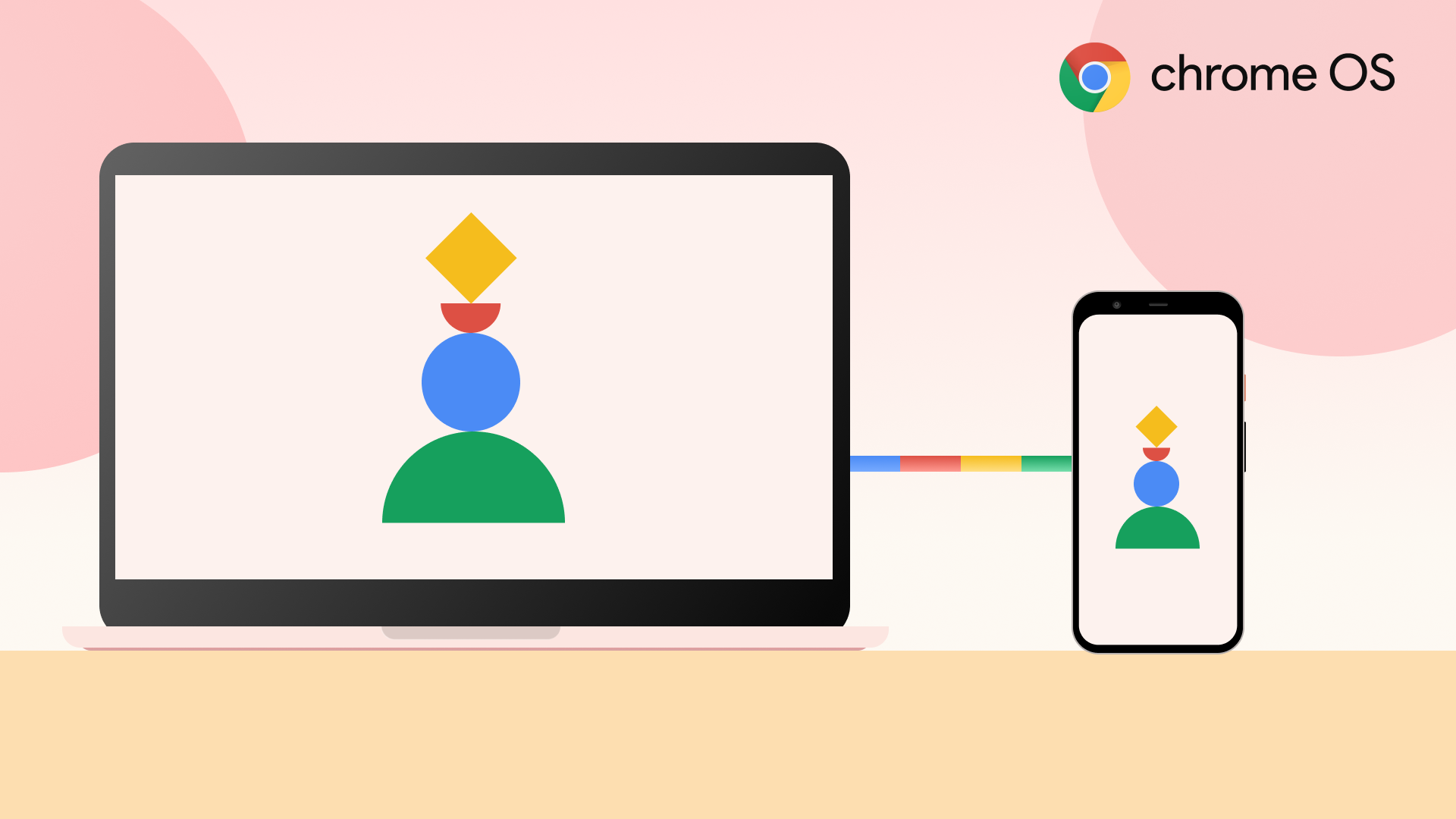
How to use Phone Hub to connect your Chromebook and Android phone
Google's ecosystem connectivity is getting better and betterBeware Android battery drain and mobile data limits
Using your Android phone as a Wi-Fi hotspot consumes battery life at a faster pace. It might also cause your device to overheat, especially in summer. If you turn on the hotspot and forget to turn it off, you'll lose a lot of battery.
Charging speed is an area where Android phones have improved over the years and can help if your battery level drops too low after sharing your internet connection. Some Android phones support fast charging but don't come with a fast charger. Our guide to the best fast chargers can help.
Another issue is using mobile data quickly. While an Android phone is designed to use the internet sparingly, a laptop preloads web pages that you might not visit, refreshes content in the background, and might download system updates. You could have unexpected trouble if your mobile internet plan has limits that cause slowdowns or overage costs. Periodically check your mobile data usage if you have concerns.
An Android hotspot can save the day
If you forgot to do something at the office, you might be able to fix something before it's a problem by connecting your work laptop to an Android hotspot. It is far safer than using a public Wi-Fi connection that might not be secure. Beyond personal use, sharing your Android phone's mobile internet as a Wi-Fi hotspot might be life-saving for your work.

